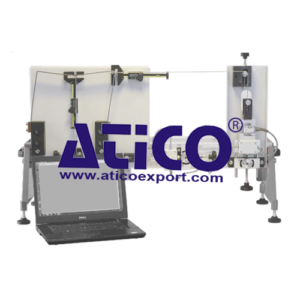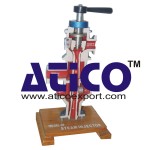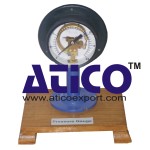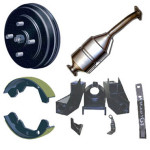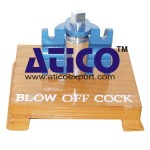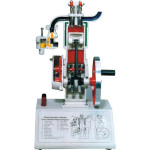Description
One of a range of experiment modules that fi t to the Structures platform this product helps students to understand the nature of plastic deformation in hot-rolled mild steel portal frames that can undergo large plastic deformations. Similar frames at real-scale form parts of buildings with large internal spaces such as factories or warehouses. Students fi t the specimen portal frame to fIxing blocks that simulate fixed foundations, and apply loads. Load cells measure the applied forces and precision indicators measure the portal deformation. Each load cell applies and measures the load through cables at 90 degrees to the portal. This preserves the load direction as the portal deforms. Students apply either vertical, horizontal or combined loads to the portal, forcing it to bend through the elastic region and into the plastic region where it deforms permanently, experiencing ‘plastic collapse’ and the formation of ‘plastic hinges’. This allows students to appreciate the ratio between yield moment and the fully plastic moment (shape or form factor), showing how this ratio provides an additional safety factor. It explains how a building may fail, but still withstand loads to allow people to safely leave before complete collapse. It also shows the interaction between the vertical and horizontal loads and the production of an interaction diagram to predict the failure mode. Students use textbook equations to predict the results, comparing them to measured results. This helps confirm the reliability of the textbook equations and the accuracy of the experiment results.
Learning outcomes
- Elastic bending to plastic deformation of portal frames
- Collapse load and the formation of plastic ‘hinges’
- Yield stress
- Deformation due to single and combined loads on a portal frame
- Generating an interaction diagram
- Shape of a collapsed portal due to hinge formation
- Introduction to limit state design
- Shape or form factor and the additional factor of safety it provides
Specifications
ATICO is committed to a programme of continuous improvement; hence we reserve the right to alter the design and product specifcation without prior notice.
Dimensions and weight:
Nett (assembled): 950 mm long x 130 mm front to back and 520 mm high and 24 kg
Approximate primary packed (with storage tray): 0.12 m3 and 27 kg
Space Needed:
1500 mm x 600 mm, level bench or desk
Items Included:
Main frame with portal fixing blocks and deformation indicators of resolution 0.01 mm
Vertical and horizontal load cells, maximum capacity 650 N
Nine specimen portals of experiment size 200 mm height and 300 length and nominal cross section 3.2 x 12.7 mm
Four cables
Hexagon tools for fixings
Vernier caliper
Inclinometer
Storage tray
Comprehensive user guide
Operating Conditions
- Operating environment: Laboratory
- Storage temperature range:–25°C to +55°C (when packed for transport)
- Operating temperature range: +5°C to +40°C
- Operating relative humidity range: 80% at temperatures < 31°C decreasing linearly to 50% at 40°C

